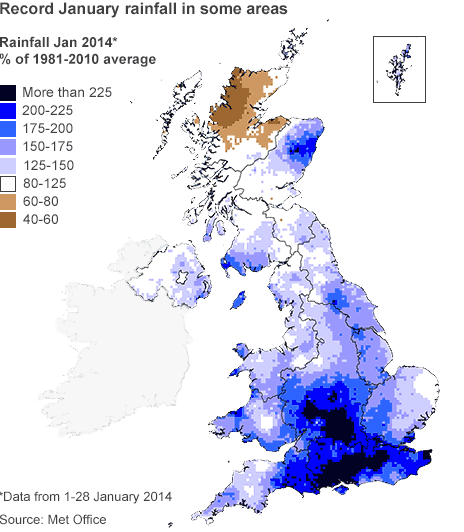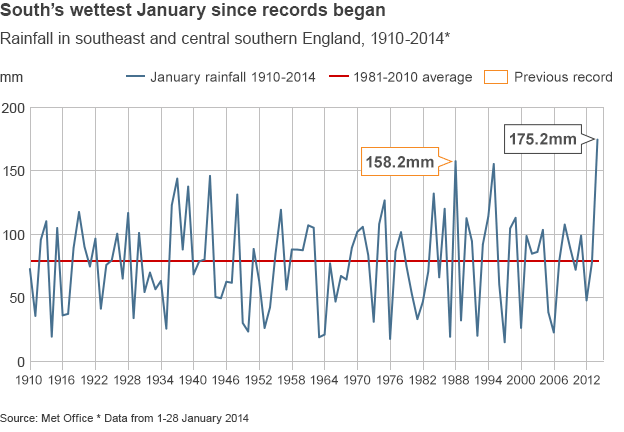
Updated 01 Feb 2014 |
Preventing floods |
Return to Home Page |
Preventing Floods |
Images and text that appeared in the media around end of January 2014. The month had been the wettest on record, and the Somerset Levels flooded for 5 weeks. |
 |
Corfe Mullen (East Dorset) just lies in the black (>225%) area. |
 |
|
|
From: BBC NewsJohn Austen, a Norfolk farmer and chairman of a drainage board, said he supported the lazy river scheme. "Here we have a flood plain protecting the village of Litcham. It's full of wildlife… absolutely fantastic. Drainage is not about diggers and silt - what we have to think about is the whole river starting with the catchment right the way down to the sea." But Mr Austen opposed the idea that grants should be made conditional on capturing water. "It shouldn't be compulsory but to really incentivise the farmer to do these projects he will want a little bit of icing on the cake - I suggest £200 a hectare to allow your grass to be flooded."
In theory farmers can already get extra EU grants to hold water on
their land, and some of the participants in the Nar trial are receiving
extra subsidies for wildlife - but experts say subsidies for water
storage are much harder to obtain than grants for benefiting wildlife.
"Although we agree that 'slowing the flow' should have an important role to play in reducing flood risk from hilly upland catchments, techniques such as tree planting need to be located carefully. "They are not a panacea, and should not be expected to significantly reduce flooding everywhere and on their own. "For this reason we would not support a requirement for all farmers to have to capture water on their land in order to access grants from the EU. "Our approach to river flooding must be balanced, looking at river systems as a whole; attenuating flows upstream where needed and maintaining capacity downstream, including de-silting and vegetation management. "The NFU would welcome guidance and environmental stewardship options that facilitated farmers to use natural processes to help control flows in, over and around farms and where appropriate store water." |
Compiled, hand coded and copyright
© 2014, John Palmer,
|